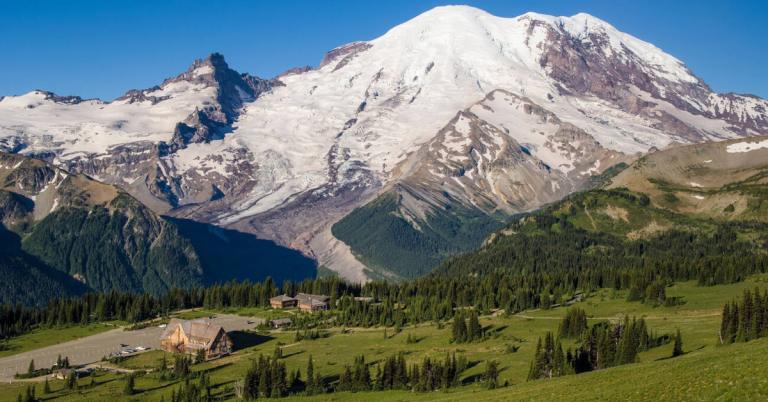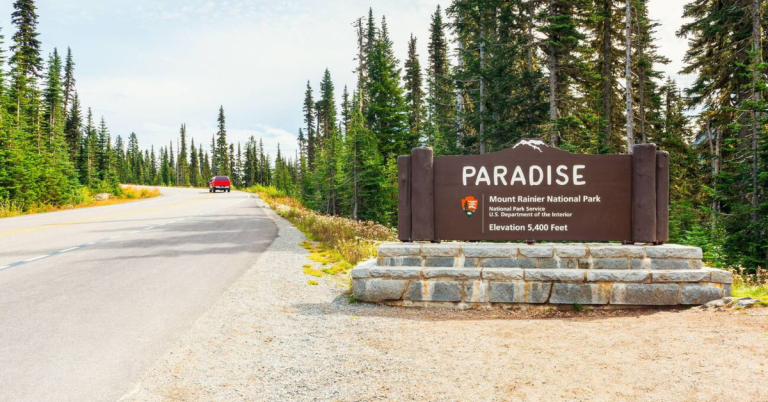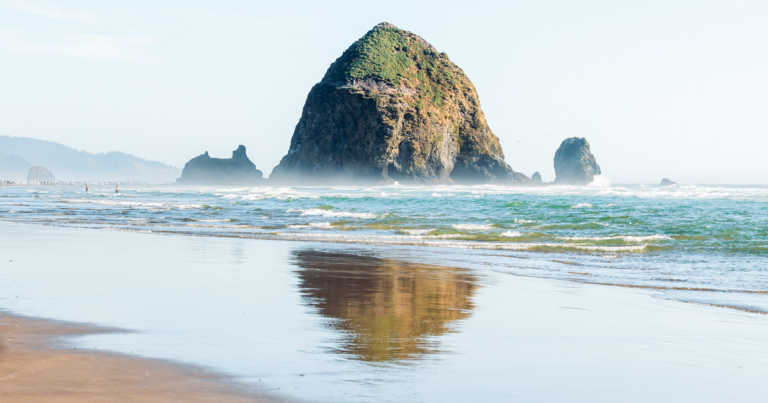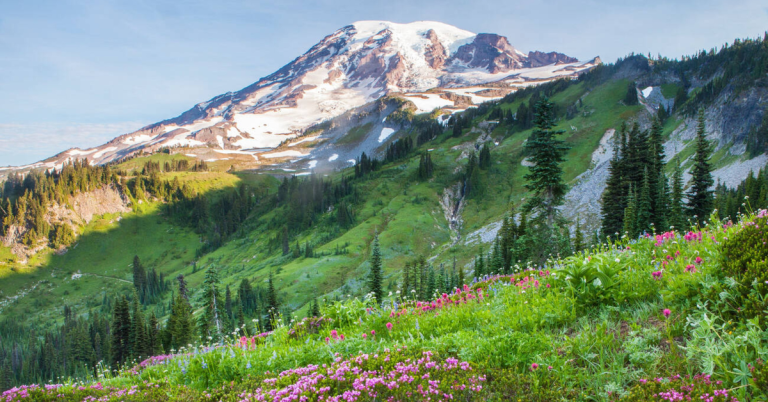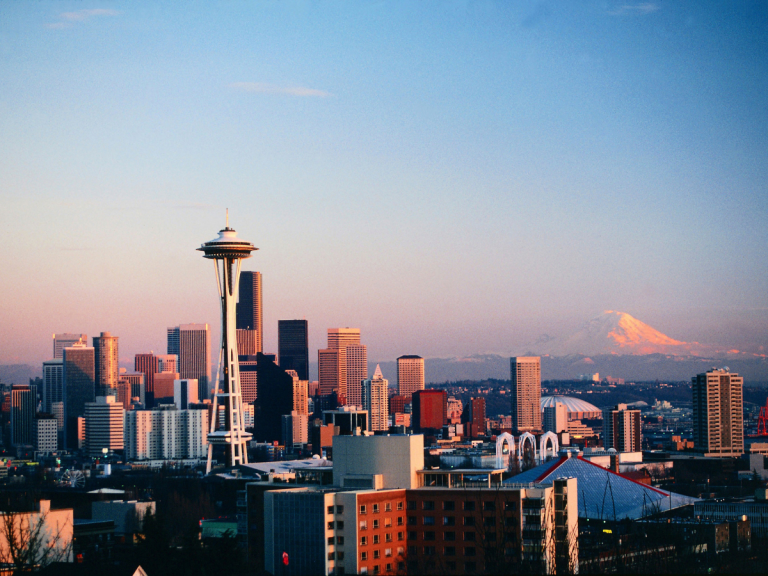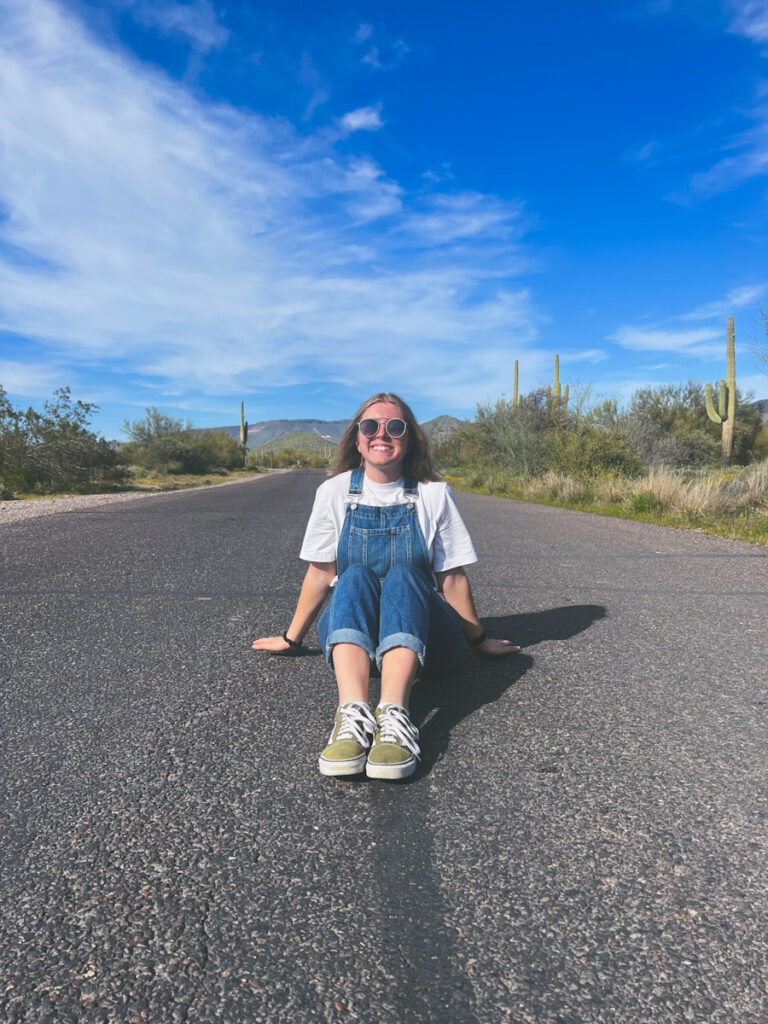7 Day Arizona Road Trip Itinerary: Best Stops & Routes
The Mobile Homie contains affiliate links and is a participant in the Amazon Services LLC Associates Program, as well as other affiliate programs. If you click on a link or make a purchase through one of these links, we may earn a small commission at no extra cost to you. For more details, see our Privacy Policy.
The first time I drove across Arizona, I couldn’t believe how fast the scenery changed. One minute, you’re surrounded by red rocks and open desert, the next, you’re winding up mountain roads lined with tall pines.
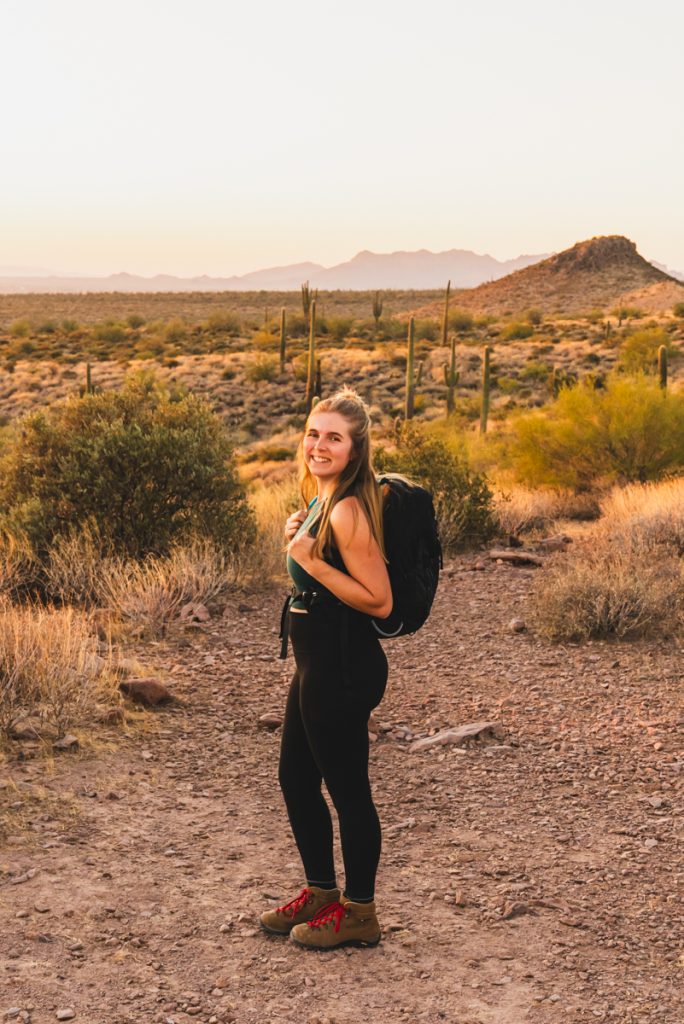
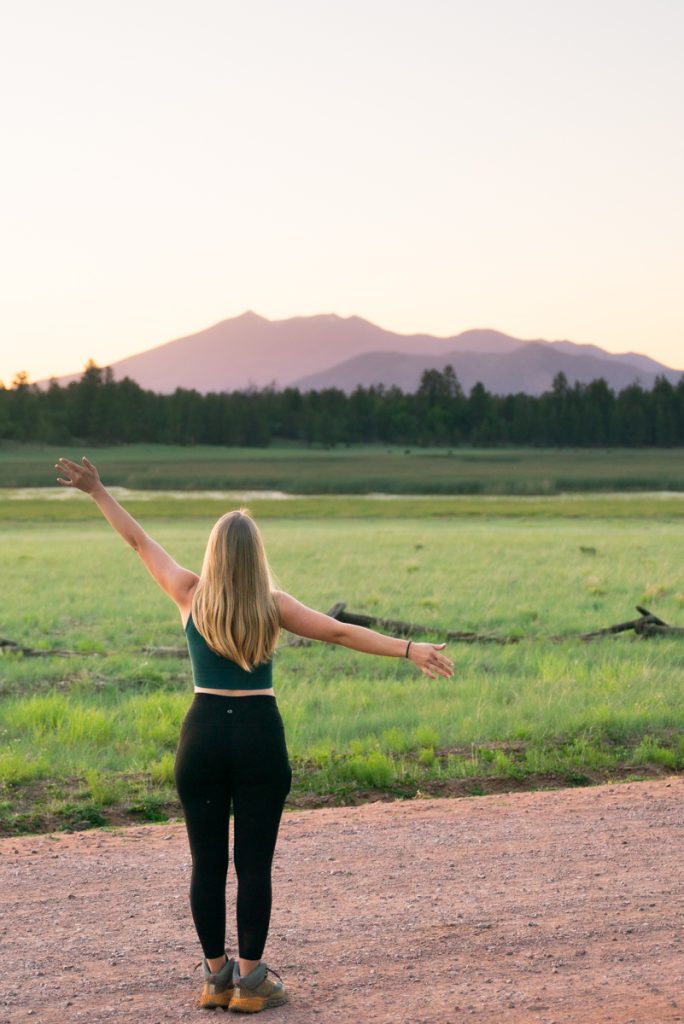
Every stretch packs in something new — hidden canyons, delicious food, quirky roadside stops, and a sky so big it almost doesn’t seem real. An Arizona road trip can be a lot to plan, but don’t worry, you won’t miss out on any of these things if you use this itinerary!
Seven days is the sweet spot for making it all fit without rushing. In one week, you can fill your days with hikes, local eats, cozy coffee shops, and jaw-dropping views (plus a few places added in by an Arizona local).
I moved to Arizona in 2017, and since then I’ve lived all over the state! So trust me — it’s a place that never stops surprising you. If you want variety and a taste of the “real” and local Arizona, this trip is it.
Planning Your 7 Day Arizona Road Trip
Let’s be honest — planning a road trip in Arizona is half the fun. The state’s wild mix of landscapes means you’ll find something new around every corner.
If you want to soak in those big-sky views but still have time for city eats, small-town coffee, and the must-see sights, a little prep goes a long way. I’ve learned a thing or two from roadtripping across Arizona over a dozen times, so here’s how to build a trip that feels just right!
Best Time to Hit the Road
Arizona keeps it interesting all year, but timing matters. For most people, spring (March to early May) and fall (late September to November) are the perfect months. Here’s why:
- Daytime highs sit in the sweet spot—think 70s or low 80s in Phoenix, cooler up north.
- Winter is bright and calm, with occasional snow dusting the pine forests and red rocks (we call this “Snow-dona”)
- If you want to spend more time, in Scottsdale or Phoenix, the weather really is better at this time.
Personally, I think it depends on what you want to do. I mean — it’s your Arizona road trip! For us, Summer is actually one of our favorite times to see the state! It is definitely too warm to do anything outside in Phoenix, or Tucson, but it is the perfect time to head north.
Some of our favorite Summer activities include swimming in Sedona, hiking in Flagstaff, and exploring Lake Powell. So don’t worry — there is plenty of stuff to do no matter what time of year you decide to visit.
It is worth noting, you should definitely book everything extra early if you plan to do your Arizona road trip during spring break or the holidays. Us locals and other travelers all get the same idea — Arizona is just so wonderful in the Spring!
Mapping Out Your Route
For a weeklong trip, a loop is your friend. Start and end in Phoenix so flights and rental cars are a breeze (and surprisingly in-expensive most of the time). This route keeps drives manageable and lets you see the “greatest hits” (plus some deeper stops).
Here’s a classic 7-day loop:
- Phoenix (start)
- Sedona (red rocks and cool art)
- Flagstaff (pine forests, hiking, Route 66 vibes)
- Grand Canyon (no words needed)
- Page (Antelope Canyon, Horseshoe Bend)
- Monument Valley
- Return through Winslow, then back to Phoenix
You can flip stops or add extra nights if you want to linger. There’s no wrong answer, but I would try to keep drive times under 3-4 hours per day to leave room for snacks and side trips (trust me — you will have some).
Choosing the Right Ride
Renting a car is almost mandatory out here. Arizona has some public transportation (there’s a light rail from the airport and a pretty good bus system), but everything is pretty far apart, so you’re going to want a car.
If you plan to hike, definitely grab a mid-size SUVs or crossover. Chances are, you’re going to need some higher clearence.
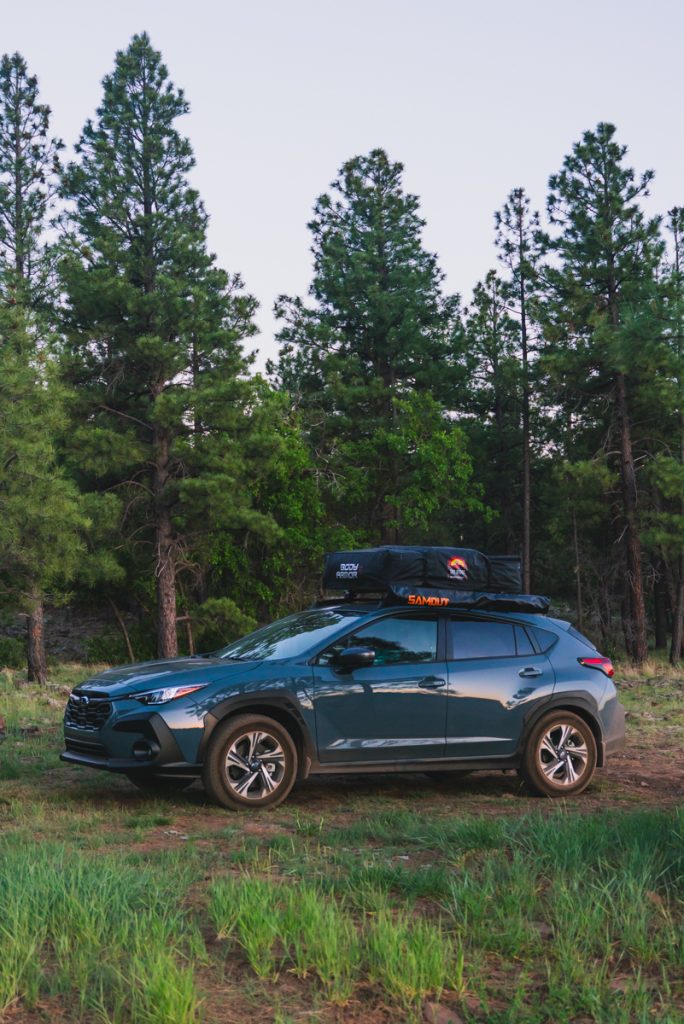
If you plan to stick to the paved roads, small cars are doable but might feel cramped with gear or multiple people, so I would probably still go with at least a crossover.
Some things worth noting:
- Check to see if you are allowed to drive on dirt roads, if you plan to hike, you will definitely encounter them at some point on your Arizona road trip (especially in Sedona or Northern Arizona).
- If you want to drive the road in Monument Valley, you will need at least AWD.
- Check with your rental car company about unlimited miles (some rural drives add up fast).
- Skip the convertible. It sounds dreamy, but the sun and dust will make you regret it.
- Pack a charger and a paper map. Service can be a bit limited, so at least download your maps offline.
If you’ve never driven in the desert, don’t worry! The roads will generally smooth and easy throughout your entire Arizona road trip. Make sure to top off your tank when you are going through larger towns (i.e. Sedona, Flagstaff, Page, etc.) and you’ll be fine!
Essential Tips for a Smooth Trip
After a few mishaps of my own (forgotten water bottles, random flat tires, surprise snow flurries), here’s what I wish I knew the first time.
- Stay hydrated: The air is bone dry, even in winter. Throw a refillable bottle in your bag. Plus, if you head North, you are going to be at a higher elevation where you need to be drinking a lot more water.
- Sunscreen isn’t optional: The sun sneaks up on you, especially at higher elevations (I can’t emphasize this enough)
- Dress in layers: Mornings can be chilly, afternoons warm. Plus, Northern Arizona can see surprise snow and all of Arizona can see surprise monsoons/dust storms (we call them “Haboobs”).
- Book ahead: Hotels, Airbnbs, and campgrounds fill up, especially near national parks.
- Cell service is spotty: Download maps and playlists before you leave town (seriously).
- Embrace the unexpected: Weekend flea markets, random food trucks, and pie shops (look left heading north on I-17) are part of the adventure.
A little planning will save you big headaches later. Plus, with the key details covered, you’ll be set to chase the best views Arizona serves up — without distractions!
If you need help planning your trip, I would recommend checking out How I Plan a Trip in 3 Simple Steps.
Day 1: Phoenix – Urban Culture and Outdoor Adventure
Phoenix kicks off your Arizona road trip with a fresh burst of city life, sunshine, and lots of food. The city is huge, but it’s easy to get around.

You can spend the first hours exploring murals downtown, duck into air-conditioned coffee shops, and then hit the trails before sunset. This city really packs in a good mix — urban buzz, Sonoran Desert views, and some of the best Mexican food you’ll find all week.
Plus, if you are looking for a smaller downtown vibe or more outdoor activities, you can head to nearby Tempe or Mesa to get your fix!
Downtown Phoenix: Art, Culture, and Coffee
Start your day with a jolt of local flavor in the Roosevelt Row Arts District. The street art here covers old brick walls and stretches for blocks. You’ll find bold colors and murals that make any Instagram feed pop.
There’s also a TON of local galleries and gift shops (like MADE Art Boutique) are scattered through the area.
Need an energy boost? Swing by one of these local spots:
- Cartel Coffee Lab: Strong brew, relaxed vibe, and always busy with regulars.
- Songbird Coffee & Tea House: Housed in an old house, super friendly and great for people-watching.
If museums are your thing, don’t skip the Heard Museum. It’s small enough not to tire you out, but packed with stories and art from dozens of Indigenous nations.
For something funkier, check out the Phoenix Art Museum. Even if you’re not an art buff, the bright central courtyard and interesting rotating exhibits are worth a look.
I’ll also add in the Musical Instrument Museum. Museums are not necessarily my thing, but the MIM is actually really entertaining. At the end, you get to play 20+ musical instruments — and even some that are really unique (yes, I got to play a Theremin).
Local Eats: Flavor That Sets the Tone
Eating in Phoenix is never boring. The city’s food scene balances old-school Mexican food with creative twists. If you only get one meal in before heading north, make it one of these:
- Taco Guild: An old church now cranking out fresh, wild tacos.
- Matt’s Big Breakfast: Tiny place, always packed, but the griddled cheese and buttered toast never disappoint.
- Pizzeria Bianco: The lines get long but the wait is part of the legend, and the wood-fired pies are amazing. Definitely get there early if you want to try this place!
There’s plenty more, but you have a week of food ahead, so pace yourself!
Outdoor Adventure: Trails, Cactus, and City Views
You don’t have to drive far to step into desert beauty. Phoenix has hiking options right in the city. My go-to is Camelback Mountain if you want a real challenge and big views.
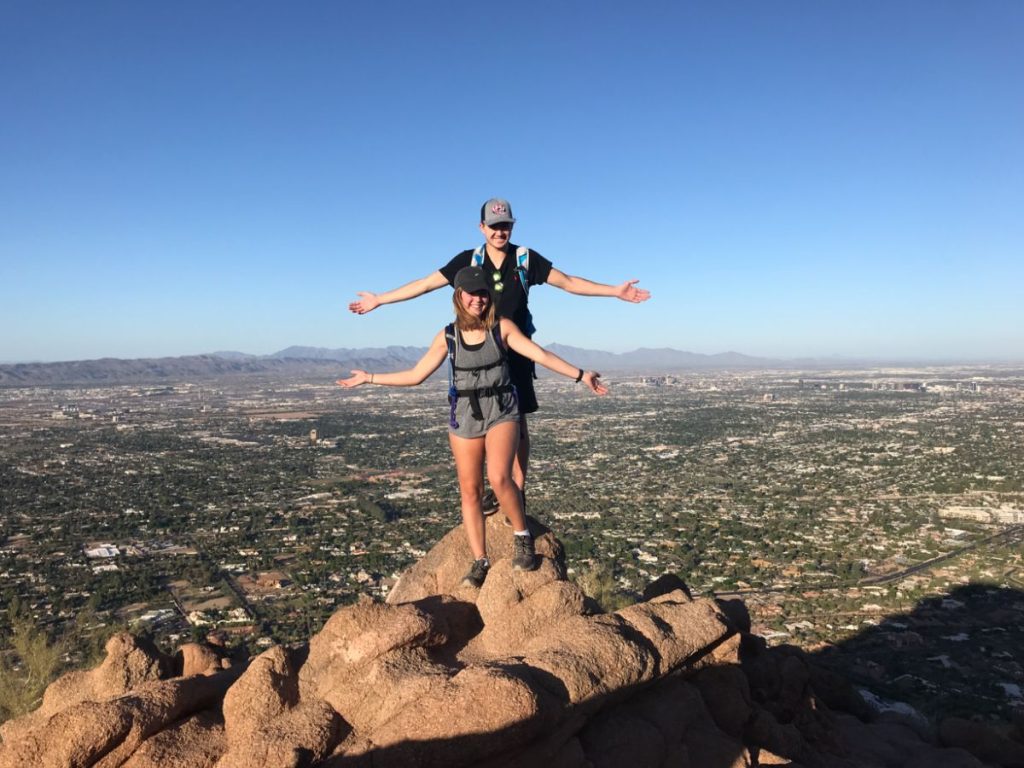
The Echo Canyon Trail is no joke, though — it gets steep and rocky but the view at the top is worth every step. I would definitely try to start early because the sun means business and parking fills up fast.
If you want less sweat, hit up Papago Park (one of my favorite sunset spots). Short trails wind through red buttes and you can scramble up to “Hole in the Rock” for a quick city overlook. You’ll see cacti, wildflowers, and probably some quail darting across the trail.
Tempe Town Lake is also a short drive from Papago Park and has one of the best walking trails in the valley.
And if you need a break from the heat, Phoenix’s Desert Botanical Garden is a favorite.
Alternatively, if you are looking for spots that are a little more “wild,” head out to Mesa to visit the Superstition Mountains! There, you can cool off in the Salt River, go on a sunset boat cruise on Saguaro Lake, and even hike at Lost Dutchman State Park.
Day 2: Sedona – Red Rocks and Vortexes
Driving into Sedona feels like driving onto another planet. The red rocks light up as soon as the sun hits them, and every corner seems to glow.
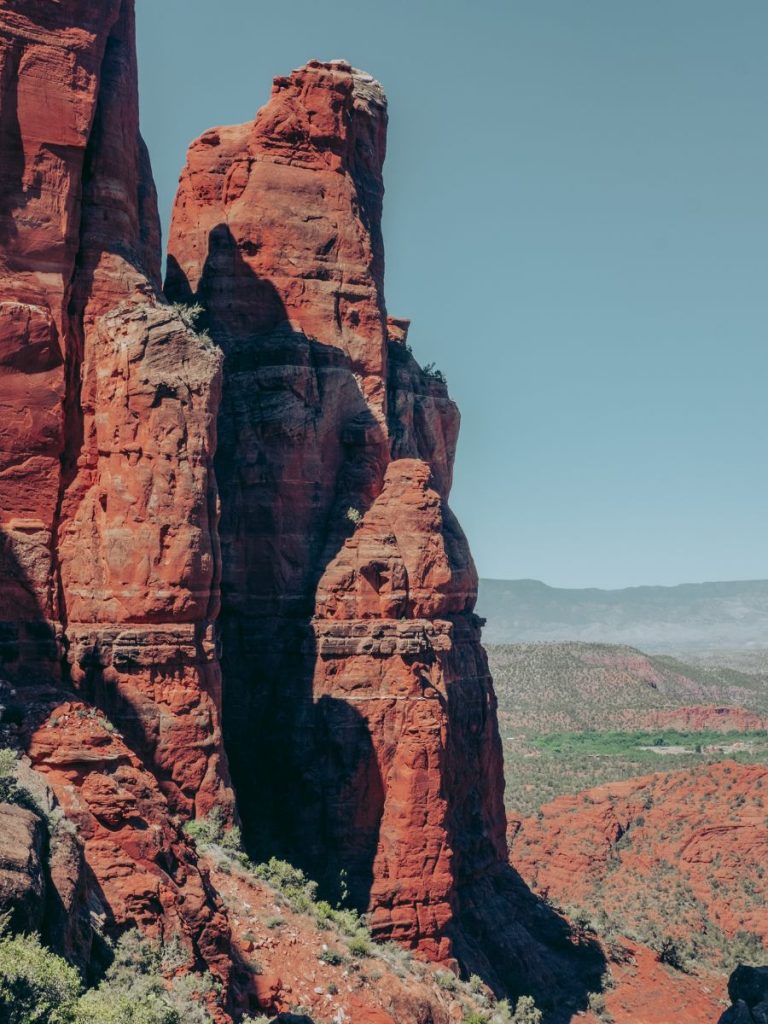
The air really does have a different kind of buzz — some blame it on the famous energy vortexes, others (and me) just call it Sedona magic. Either way, you can’t help but slow down, breathe deeper, and stare a little longer.
Here’s how to make the most of a full day among the red rocks, swimming holes, and quirky arts spots.
Top Hikes and Outdoor Activities in Sedona
If you love fresh air, get your camera ready. Sedona has trails for every type of hiker, plus a few swimming holes that are a total lifesaver after a dusty trek. Here’s what locals (mostly me) and first-timers both rave about:
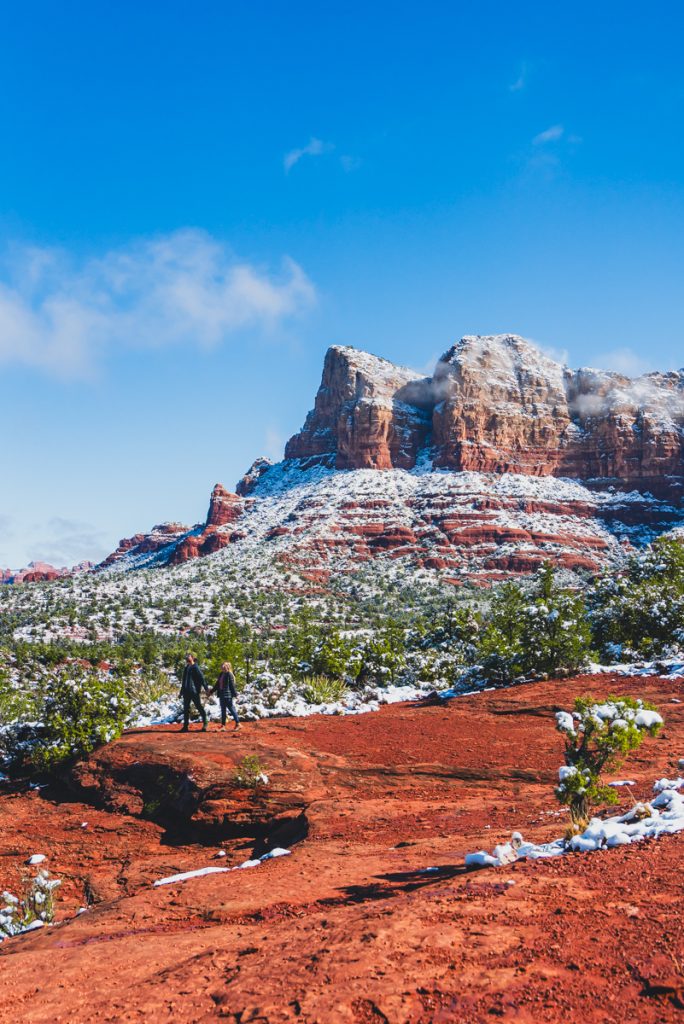
- Cathedral Rock Trail: This is the postcard view of Sedona. The hike is short but steep and there are definitely some hands-and-feet scrambling in some spots. At the top, the views are probably some of my favorite that I’ve ever seen.
- Bell Rock Pathway: Great for all ages, this trail loops around one of Sedona’s most iconic formations. It’s easy to reach and gives wide-open views of the beautiful red rocks.
- Devil’s Bridge: This natural rock arch is a Sedona classic. The trail climbs through junipers and red dirt, ending at the perfect photo spot. This one is a cool “classic” stop, but if you go, I would definitely go early.
- West Fork Trail: Want something a bit cooler and shadier? This trail winds along a creek with plenty of spots to dip your toes.
- Boynton Canyon: Known for both its scenic beauty and energy vortex (if you’re into that). The outlook near the end is a great lunch spot.
After hiking, there’s nothing better than cooling off in natural water. Sedona has two must-visit swimming spots:
- Slide Rock State Park: Bring water shoes and don’t skip this! Natural slides carved into the rock let you zip down into the creek. It’s super popular for a reason.
- Grasshopper Point: Quieter than Slide Rock but just as fun. Swim in clear pools, lounge on big flat rocks, or watch daring locals jump from the cliffs. It feels more “hidden” than you’d expect for a place just minutes from town.
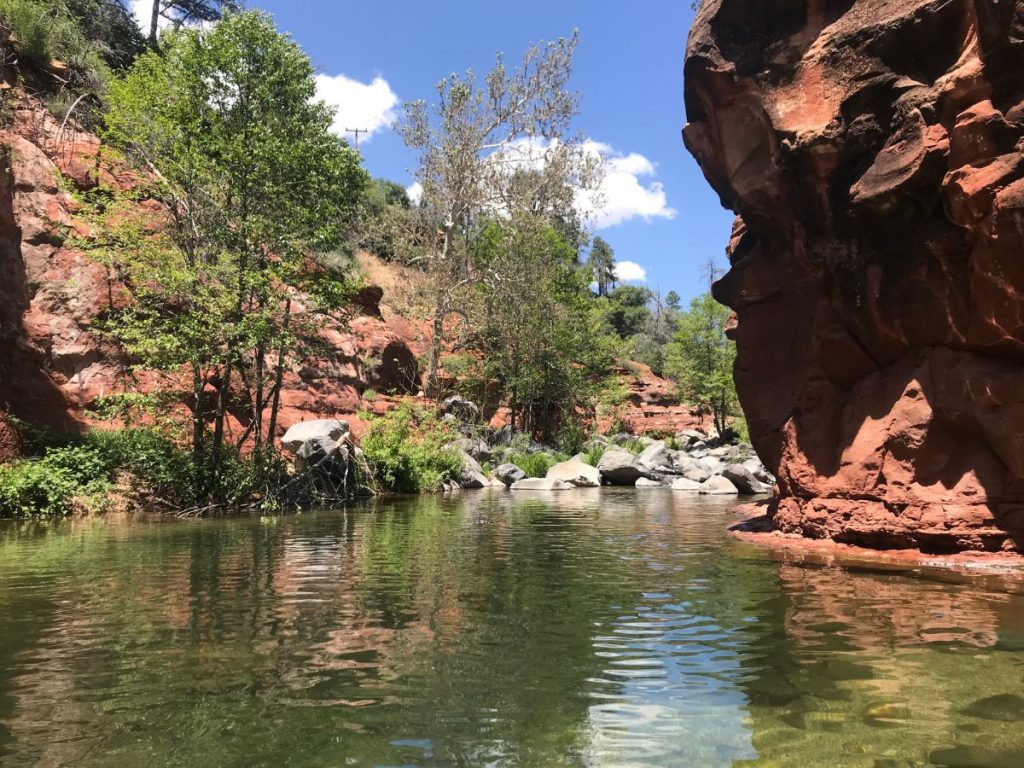
At both places, the parking fills up fast, so just consider that. You do need to pay to get into each spot and need to park in a designated area. You used to be able to park up 89-A and walk in, but they’ve really cracked down on it the last few years, so your best bet is to just get there early!
A few tips before you set out:
- Start hikes early—parking fills up and the sun gets strong by midday.
- Pack snacks, plenty of water, and a hat.
- If you want a real adventure, try a guided Jeep tour. They’re bumpy, loud, and the drivers know all the secret photo stops — plus, they’re super fun!
Sedona’s outdoors will burn enough calories for a big dinner. Trust me.
Exploring Sedona’s Uptown and Arts Village
After a day on the trails (or if your legs need a break), shift gears and check out Sedona’s creative side. The town feels like a blend of Wild West, new age, and local art pride — there’s always something to see, taste, or buy.
Uptown Sedona is the walkable heart of town. You’ll find T-shirt shops, candy stores, and rows of galleries filled with colorful paintings and sculpture. Coffee spots like The Chai Spot or Sedona Coffee Roasters are pretty good and will keep the energy going through the afternoon.
Hungry? Some of my favorite dining spots:
- The Vault: Big windows, craft cocktails, and views you’ll want to slow down for. They have the best “Trashcan Nachos” and the best sunset view.
- Sedona Beer Company: On the edge of Uptown, this spot dishes out some amazing loaded fries!
- Sedona Deli: Casual, family-friendly, great for sandwiches, salads, and bakery treats.
Don’t miss Tlaquepaque Arts & Shopping Village (pronounced “Tla-keh-pah-keh”). This Spanish-style plaza is a maze of courtyards, fountains, and galleries.
You’ll hear street musicians and see local artists at work. It’s as much about wandering as it is about shopping. If you like handmade jewelry or Native American crafts, this place is your gold mine.
Day 3: Flagstaff & Route 66 – History Meets High Country
Take my advice, roll your windows down as you leave Sedona and you’ll smell that switch from desert dust to pine needles. Day three drops you into Flagstaff, a laid-back mountain town with cool air, railroad history, and pine forests instead of cactus.
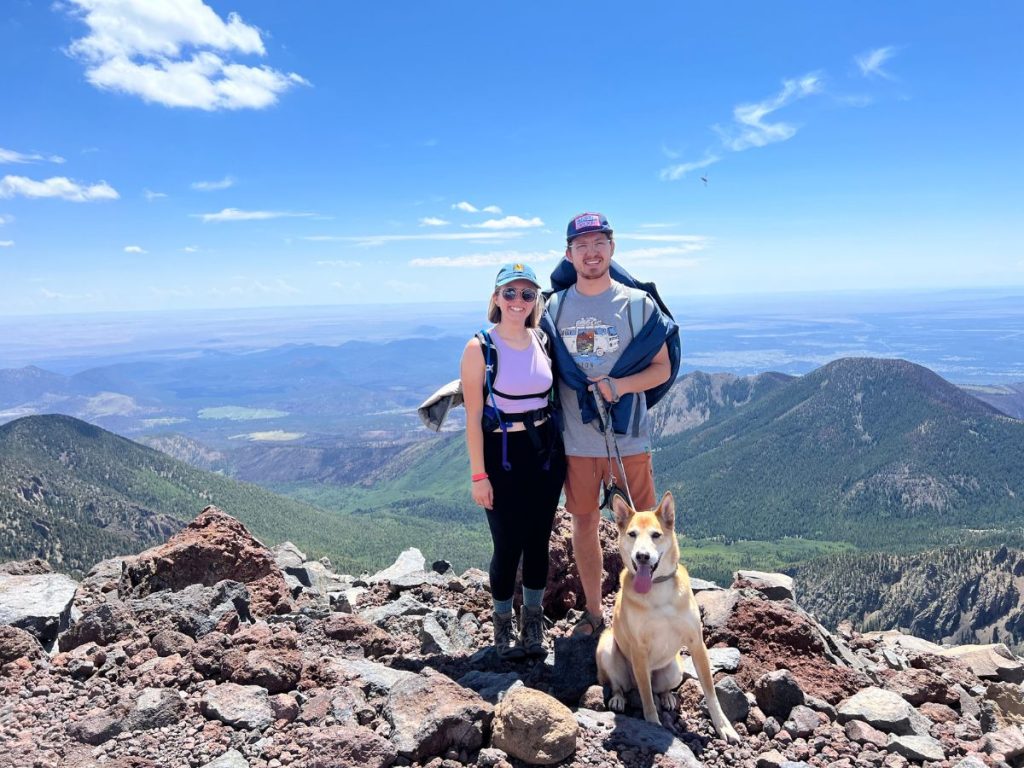
Best of all, you’re officially on Route 66. Nostalgia, neon lights, and classic diners fill these old streets. If you love road trip history, small-town charm, and a little nighttime buzz, Flagstaff delivers. After living in Flagstaff for 4 years, here’s some things that make it stand out:
Route 66 Landmarks and Photo Stops
Flagstaff wears its Route 66 pride like a favorite jacket. Whether you geek out on classic road history or just want the best Instagram shots, you’ll have plenty to look at.
You can’t drive through downtown without spotting a vintage sign or old brick hotel. Here are some key stops:
- Historic Route 66 Signs: Snap a picture at one of the official Route 66 road signs. There are a few around central Flagstaff, including just outside the historic train station.
- Downtown Train Station: Built in 1926, it’s right on “Main Street of America.” You’ll see freight trains roll through almost every hour—kids and adults both love watching.
- The Monte Vista Hotel: Once a stop for movie stars and outlaws, its bright neon beacon lights up the night. Even if you aren’t staying, the lobby & Monte Vista Lounge have some of the best vibes in town!
- Route 66 Murals: Flagstaff leans into its road-trip identity with murals that make for fun photo stops. For the best, walk along Aspen Avenue and Route 66.
If you want to geek out further, pop into the Flagstaff Visitor Center inside the station. They hand out free Route 66 maps and postcards!
Route 66 in Flagstaff is the mix of old-school Americana and mountain-town chill. You’ll grab a burger, hear some live music on a patio, and feel like you’ve stepped into a postcard.
Flagstaff’s Unique Local Eats and Nightlife
Flagstaff might be small, but this place punches above its weight in flavor and fun. The college crowd from Northern Arizona University keeps things lively, and you’ll find coffee by day, craft beer by night, and a wide range of food in between.
Here’s where to fill up and kick back:
- Local Coffee: Start your day at Late for the Train or Firecreek Coffee Company. Both roast their own beans and have cozy, woodsy vibes.
Lunch and Dinner: Wander the main drag and you’ll spot options for every taste.
My favorites:
- Diablo Burger: Local beef and English muffins instead of buns. The fries are hand-cut and dusted with rosemary.
- Pizzicletta: True Italian-inspired pizza from a brick oven. Super casual with only a few tables.
- Pato Thai: Authentic and delicious Thai food. This Thai place has ruined all other for me.
As the sun drops, the city lights up with local brews and live music:
- Breweries: Flagstaff has more breweries than you’d expect. Mother Road Brewing Co. is a local favorite with a huge patio and a rotating lineup. Lumberyard Brewing is set in an old lumber mill and makes a solid spot for big groups. Historic Brewing Co. has some of the most delicious appetizers in town.
- Live Music and Nightlife: Head to The Orpheum Theater for touring bands, indie films, and quirky events. Smaller bars, like Flagstaff Brewing Company, often feature live music with no cover.
- Lowell Observatory: If you’ve got any gas left in the tank, drive up Mars Hill after dinner. This historic observatory is where Pluto was discovered (yes, really). They have night telescope sessions that let you check out planets and star clusters in the clear mountain sky.
Eat well, check out some stars, and enjoy the cool air. Flagstaff is Arizona’s high-elevation pit stop, and it might just charm you more than you expect (I know it always does for me).
Day 4: Grand Canyon National Park – Natural Wonder
You probably knew this day was coming — the Grand Canyon is the reason a lot of people even drive through Arizona in the first place. But even if you think you’ve seen pictures, nothing gets you ready for that first moment at the edge.
The air changes. The colors shift with every cloud. The canyon is so big, so downright wild, it almost feels made up. Some spots make you stop talking and just stare, while others get your legs moving along the rim or all the way into the canyon.
Whether you want to catch the best sunrise, hop on park shuttles, or find the perfect picnic spot, I’ve got you covered for a day at the South Rim.
The South Rim’s Best Viewpoints
Most first-timers stick to the South Rim, and for good reason — it’s open year-round, easy to reach from Flagstaff, and the classic “Grand Canyon” view is all yours.
If you want the kind of photos that fill up frames at home, your best bet is to start at these must-see viewpoints:
- Mather Point: The “welcome to the canyon” spot. It’s a short walk from the visitor center and gives you a huge, wide-angle view. The crowds pile in here, but it’s pretty good for a first look.
- Yavapai Point: Walk or jump on the shuttle to this one. The geology museum sits right on the edge, so you can stare at the rock layers and actually understand what you’re seeing.
- Hopi Point: This spot is famous for its sunset. You get a long view west with the Colorado River winding in the distance.
- Grandview Point: Less crowded, more dramatic. Stop here to escape the tour bus crowd and snap a sweeping panorama.
- Desert View Watchtower: Further east, and a bit of a drive, but the 70-foot tower lets you climb for one of the widest views in the park.
For the best experience, pick two or three viewpoints instead of trying to visit them all. Each one feels different—some let you see down to the river, while others stretch off forever.
Best Sunrise and Sunset Spots
You won’t sleep much if you want to catch both sunrise and sunset, but honestly, it’s worth it at least once. The changing light makes the whole canyon come alive. Here’s where you’ll want to set your alarm (or timer):
- Sunrise: Get yourself to Mather Point or Yaki Point. Bring a warm drink — the air is crisp and it can get chilly even in summer. The colors ramp up from purple to gold in less than thirty minutes.
- Sunset: Hopi Point wins almost every time. Arrive early to grab a spot. Lipan Point is another solid option, especially if you want extra elbow room.
Sunsets pull a crowd, but you can get some quiet just a short walk away from the most popular spots. Don’t rush. Let the light change all the way until dusk. You’ll notice the colors deepen as most folks wander back to the parking lot. The first time I visited at sunset, you couldn’t pull me away!
Getting Around: Shuttle Buses and Tips
Driving yourself to every viewpoint might sound easy, but the park has a few rules and a lot of parking drama during busy months. The good news? The shuttle system is free and actually works great.
Here’s the break down:
- Village Route (Blue Line): Connects lodges, parking lots, and the visitor center—great for getting your bearings.
- Hermit Road Route (Red Line): Runs March through November. Cars aren’t allowed on Hermit Road during these months, but the shuttle stops at all the best viewpoints west of Grand Canyon Village.
- Kaibab Rim Route (Orange Line): Hits key sunrise, geology, and East Rim spots like Yaki Point and the South Kaibab Trailhead.
Buses run every 10-15 minutes. They get crowded near sunrise and sunset, but people are pretty friendly about sharing space. Pro tip—If you want more flexibility or plan on catching sunrise, park as early as you can and use the shuttles to hop between viewpoints.
Bring snacks and water with you. The canyon is bigger than it looks, and you’ll be glad for extra energy if you’re bouncing between shuttle stops.
Trails: Rim Walks and Canyon Hikes
Not everyone wants to trek into the canyon (it’s tougher than it looks on Instagram), but there are options for every comfort level.
Here are the top picks:
- Rim Trail: This mostly flat path runs from the Visitor Center all the way past Hermit’s Rest, with plenty of entry and exit points—a great pick for easy strolls. It’s paved and family-friendly near the main village, turning to packed dirt further west.
- Bright Angel Trail: Want a taste of what it’s like heading into the canyon? This trail drops right below the rim from Grand Canyon Village. Even a short walk down gives you a new view, but remember, climbing up always takes twice as long as going down. Also, make sure to bring water — no matter the time of year.
- South Kaibab Trail: Known for jaw-dropping views almost from the start. This hike only takes about an hour round-trip, but again, bring water (even on cool days).
Grand Canyon Village: History, Eats, and Classic Views
Grand Canyon Village is more than just motel check-ins and concession stands. You’ll find a real sense of history and a few hidden gems.
Don’t miss:
- El Tovar Hotel: The wooden lodge feels like stepping back into 1905. Even if you’re not staying, pop in for breakfast or a drink at the bar. The porch looks straight over the canyon.
- Lookout Studio and Kolb Studio: These perched buildings offer some of the best rim views and curious gifts. The photo exhibits tell wild stories from the canyon’s earliest explorers.
- Grand Canyon Railway Depot: Even if you didn’t arrive by train, this log cabin depot is a photogenic stop. You might hear the whistle blow as you walk by.
- Historic Verkamp’s Visitor Center: Tucked near the rim, this spot mixes history, local art, and friendly rangers happy to answer questions.
For food, options in the village range from grab-and-go burritos to sit-down dinners at El Tovar. If you’re picnicking, the Market Plaza makes stocking up easy. Find a quiet bench near the rim and enjoy lunch with one of the best views on Earth.
Take a deep breath, look around, and remember this day. The Grand Canyon really is one of those places that sticks with you long after you drive away.
Day 5: Page – Antelope Canyon & Lake Powell
Page is the kind of place that makes your jaw drop as soon as you roll into town. Surrounded by red sandstone hills and that famous deep blue water, it feels like Arizona… but also not like anything you’ve seen before.
Today is all about big views, slot canyons, and cooling off by the water. Tight on time? Don’t stress — everything here is close together, so you can easily fit in all the highlights with a little planning.
Touring Antelope Canyon: What to Know
Antelope Canyon looks straight out of a fantasy movie. It’s that long, winding slot of red rock you see in travel magazines, with sunlight beaming down in narrow shafts. But you can’t just show up and wander in — tours are required, and they do fill up fast.

Here’s the scoop:
- Booking a tour is non-negotiable. Navajo guides lead all groups, and for good reason. The canyon sits on tribal land, and the guides know the best spots for photos and stories.
- Two main options: Lower and Upper Antelope Canyon. Upper is famous for its light beams (think sunrays cutting through the dusty air), but tickets sell out weeks ahead. Lower is narrower and has more ladders, but it can be less crowded and you still get stunning views.
- Tour times: Early and late-day tours are cooler and sometimes less crowded. Midday is best for photographers chasing those light beams, but it gets busy.
- What to bring: Small bags only (no backpacks), closed-toed shoes, lots of water, and a camera. Leave tripods and drones behind—they’re not allowed.
- Logistics: Tours usually last about 60-90 minutes. You’ll meet at tour offices in Page or near the canyon entrance. Parking is simple, but plan to arrive early.
- Price range: Expect $70-$120 per person, depending on the time of year and which canyon you pick. Kids often get a discount.
Pro tip: Some tours offer combo packages with stops at nearby spots like Horseshoe Bend or other smaller slot canyons. If you want to maximize your time (and see even more), this could be a smart pick.
If you’ve got energy after the canyon, Horseshoe Bend is just a quick drive away — an easy half-mile walk from the parking lot gets you to a classic bend in the Colorado River. Go early or late to beat the crowds and the heat. I would say this is one of my favorite stops in Northern Arizona, so don’t miss it!
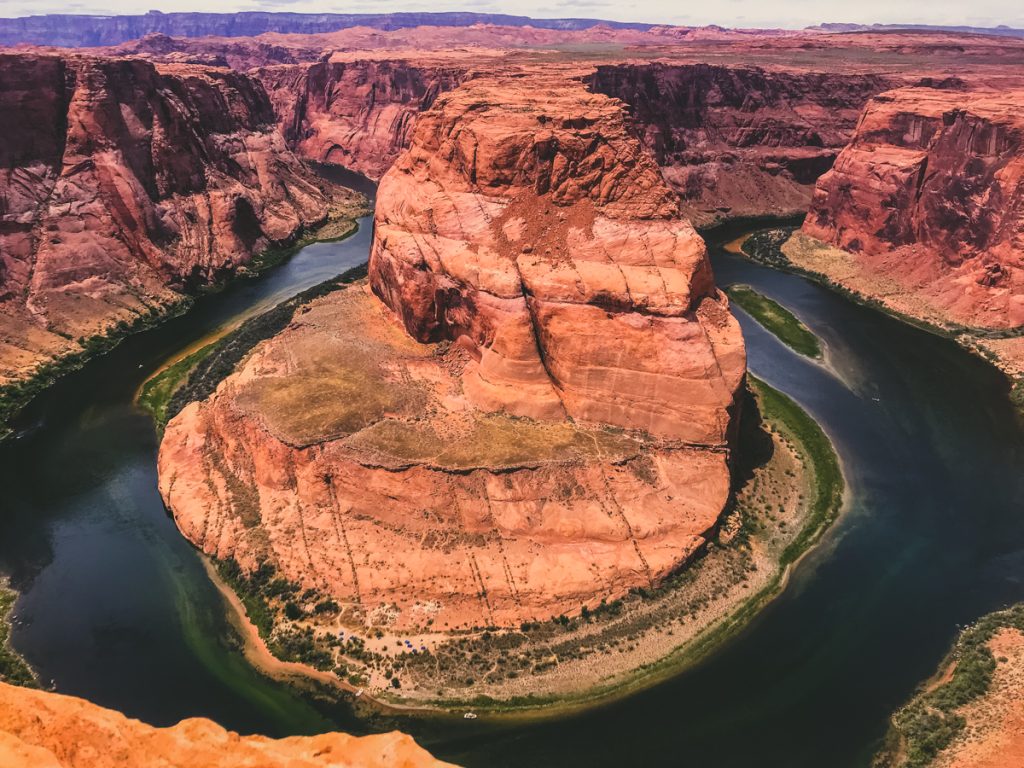
Outdoor Fun at Lake Powell and Glen Canyon
Let’s talk about the thing that makes Page so fun: all that water! Lake Powell snakes through rocky canyons, with hidden coves and secret beaches everywhere. Everyone can jump in, float, or just kick back.
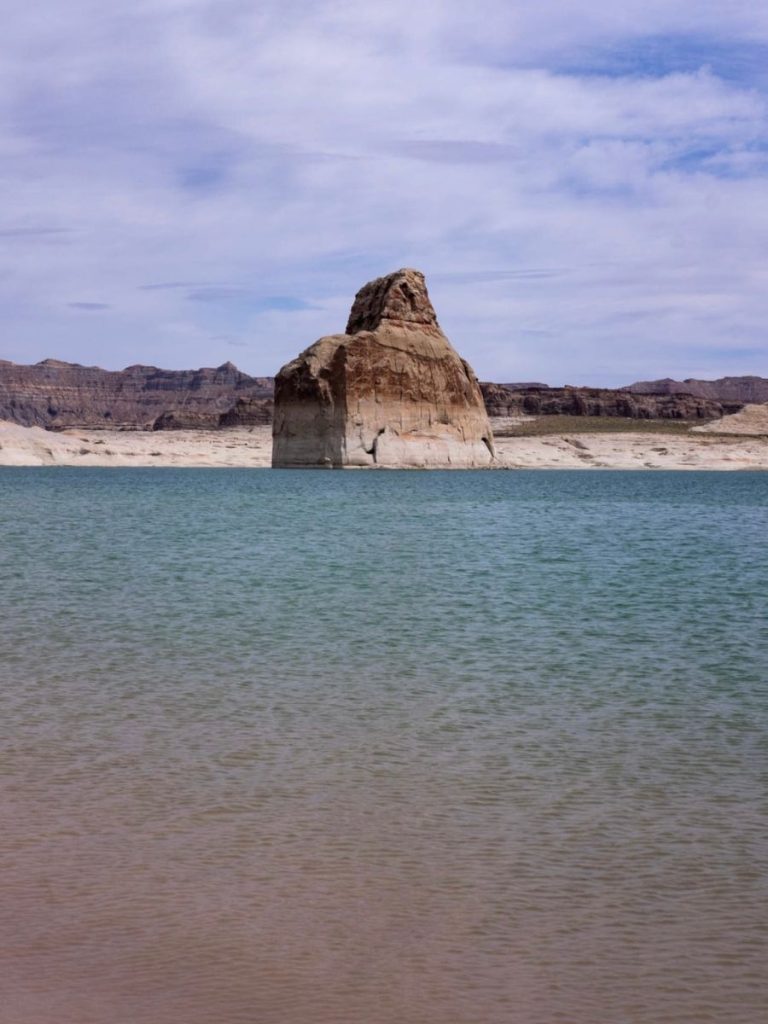
Here’s how to make the most of Lake Powell and the Glen Canyon area:
- Swim or paddle: Rent a kayak, stand-up paddleboard, or small boat at Wahweap Marina (right outside town). The water is clear, cool, and perfect for a fresh dip after the dusty canyons.
- Boat tours: Not up for paddling? Hop on a guided boat tour. Options range from quick scenic cruises to half-day trips exploring the canyons and even cooling off for a swim. If you want to see the famous Rainbow Bridge (one of the world’s largest stone arches), check which tours head there. It’s a longer ride but worth it.
- Beach time: Lone Rock Beach is a local favorite for picnics, mellow waves, and even camping right on the shore. You can drive right up if you have the right vehicle, or park nearby and walk down.
- Fishing & water sports: Lake Powell is a playground for anglers and anyone who loves waterskiing or tubing. Equipment rentals are easy to find at marinas, and you can book a spot with a fishing guide if you want local tips.
- Short hikes: Glen Canyon Dam Overlook gives you wild views of the Colorado River slicing through sheer cliffs. It’s an easy walk, and the lookout never gets crowded. Page also has short trails leading down to sandy spots along the water — great for stretching your legs or catching sunset.
A few helpful tips to wrap up a day here:
- Sun is strong by the water—sunscreen and sun hats are essentials, even if you usually skip them.
- Bring snacks, a cooler, and plenty of water. Food options around the lake are basic, and having your own picnic makes everything easier.
- Marinas get busy on weekends. If you want to rent gear or park close, get there early.
You’ll end the day with red dust on your shoes and probably a little sunburn on your nose, but you won’t care because you had such a great day surrounded by an oasis in the desert.
Day 6: Monument Valley & Navajo Culture
Get ready for that feeling when you drive somewhere you’ve only seen in old Western movies, and suddenly it’s all right in front of you. Monument Valley isn’t just “iconic” for Arizona, it actually feels unreal — red rock towers rising straight out of the earth, miles and miles of wide-open road, and skies that go forever.
Even if you’ve already snapped 500 photos this trip, the urge hits again as soon as you catch sight of those spires in the distance. But Monument Valley is more than just a pretty pit stop—it’s also the living heart of Navajo culture, and meeting people here adds real meaning to the journey.
Iconic Photo Spots and Scenic Drives in Monument Valley
The classic Route 163 stretch into Monument Valley might be the most famous road in the Southwest. It’s the spot where Forrest Gump stopped running, and trust me, you’ll want to stop, too (just pull off safely for your own “road shot”).
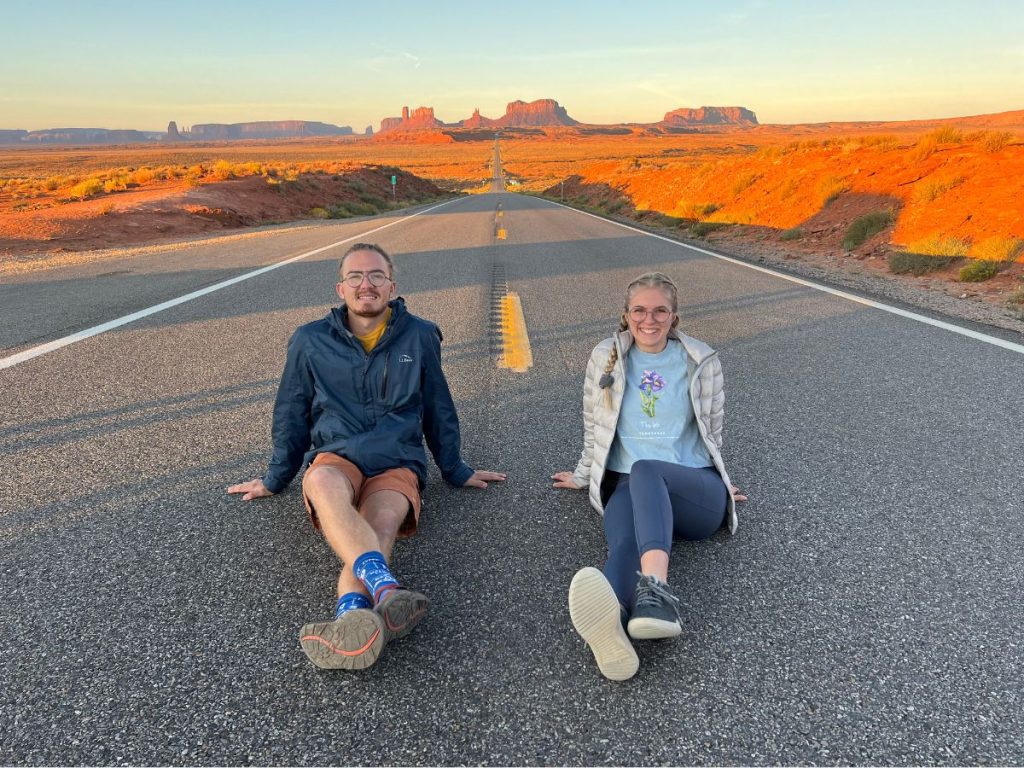
Big highlights for photos and views:
- Forrest Gump Point: Park just south of the Utah border and grab that straight-shot view into the valley. Early morning or late afternoon brings the best colors — plus, if you go at sunrise, very few people will be there!
- Monument Valley Scenic Drive: Inside the Tribal Park, a 17-mile dirt loop weaves through the real heart of the valley. You can drive your own car if the roads are dry and you’re comfortable on dust and bumps. Low clearance cars might have trouble, and rain can close the road completely, so check before heading out.
- John Ford’s Point: This overlook is movie-famous. It’s where directors shot classic cowboy scenes, and sometimes you’ll see a local on horseback ready for photos (small fee, cash is handy).
- The Mittens and Merrick Butte: You’ll see these from the main viewpoint near the visitor center. Sunrise or sunset turns the stone deep red and orange—plan your visit for golden hour if you can.
- Three Sisters, Totem Pole, and Yei Bi Chei: These wild rock shapes line the scenic drive. Each one feels like it tells its own story.
Here’s how to squeeze the best from your visit without getting overwhelmed:
- Arrive early or late for softer light and fewer crowds. The valley glows in those hours, and temps are a bit more forgiving.
- Guided tours are a smart choice if you want real stories and insider access. Navajo guides run open-air jeep tours, horseback rides, and even stargazing trips. They can get you to spots off-limits to private cars, and share what the formations mean to local families.
- Pack water, snacks, and a hat. There’s little shade out here, and you’ll want to take your time at view after view.
A few minutes standing at any overlook here, and the rest of the world feels very far away.
Understanding Navajo Traditions and Local Experiences
Monument Valley sits inside the Navajo Nation, which is the largest Native American reservation in the country. This land isn’t just scenery — it’s home to families who’ve lived here for generations. Respect, curiosity, and a little patience go a long way.
Here are ways to connect with Navajo tradition while you visit:
- Book a Navajo-led tour: Guides don’t just point at rocks — they’ll share stories from their own lives, talk about ceremonies, and show how the land connects deeply to tribal beliefs. It’s eye-opening in the best way.
- Try local food: Don’t skip a Navajo taco if you see it for sale at the visitor’s center or a roadside stand. Think frybread piled with beans, meat, and cheese. Simple, filling, and totally local. Mutton stew is another staple if you want to branch out.
- Shop for crafts: Markets and shops near the park sell handmade jewelry, rugs, pottery, and carvings. Many are made by families you’ll meet right there. Look for the “authentic handmade” tags. Buying direct means your money actually supports local artists.
Quick pointers for being a good guest:
- Stay on marked paths and inside tour areas. Many spots are off-limits unless a Navajo guide invites you in.
- Respect local customs. Modest dress and a quiet voice, especially at prayer or historical spots, show respect.
- Don’t pick up rocks or carve your name anywhere—leave the valley as you found it for the next visitors (and the locals who live here).
Monument Valley isn’t just about big photos — taking time to connect with the people who call this land home gives you a memory that lasts way beyond the drive out.
Day 7: Petrified Forest National Park & Return to Phoenix
The last day of an Arizona road trip always arrives sooner than you think. The good news? You’re heading straight into one of the brightest surprises of the whole state: Petrified Forest National Park.
Most people picture desert and cacti, but today is a wild ride through rainbow-hued badlands, ancient petrified logs, and a painted sky that looks more like Mars than the Southwest. Don’t pack away your camera just yet — this is Arizona showing off one last time before the drive back to Phoenix.
Visiting Petrified Forest National Park
For first-timers, the mind-blowing colors and weird shapes catch you off guard. Instead of giant trees or forest shade, you’ll find wide-open grasslands, mushroom-shaped rocks, and logs turned to stone that glint in the sunshine.
A few must-sees in the park (all easy to reach by car or on short walks):
- The Painted Desert: Start at the north entrance. The badlands here look tie-dyed in stripes of pink, lavender, red, and orange. The overlooks are close to the road, so you don’t have to hike far for crazy-good photos. Early morning or late afternoon light makes those colors pop.
- Blue Mesa: Wind through soft blue and purple hills on a paved loop trail (it’s an easy 1-mile walk, but wear good shoes). The layered mesas are softer underfoot than they look, almost chalky, and totally unique.
- Crystal Forest and Rainbow Forest: You’ll see petrified logs scattered everywhere, some bigger than a pickup truck. These ancient trees are over 200 million years old, now solid rock striped in red, yellow, and even aqua.
- Agate Bridge: This natural stone log stretches out over a gully. It’s a quick stop, but a cool story and a fun photo op.
- Newspaper Rock: Stand on the viewing platform and scan more than 600 ancient petroglyphs etched into flat stone. It’s an outdoor history lesson carved by hands centuries ago.
If you’re traveling with kids or just love a classic pit stop, the gift shop near Rainbow Forest Museum has fossil displays and the rangers here are friendly and know their stuff! So don’t be shy about asking questions.
Driving the Park Road: Short Walks and the Best Overlooks
The main park road runs north to south for about 28 miles. If you’re itching to get out of the car, there are plenty of short walks and overlooks. Here’s a quick plan to make the most of your drive:
- Painted Desert Visitor Center: Pick up a park map and snacks. Head to Tiponi and Tawa Points for early big-sky views.
- Pullouts: Take each overlook seriously—the views change fast, and every stop gives you a new angle. Some, like Pintado Point and Kachina Point, have benches made for snack breaks or quick sketches.
- Blue Mesa Loop Trail: Don’t skip this. The trail drops you down among swirling blue-and-white hills where you’ll feel tiny (and totally in awe).
- Petrified Logs Trails: Park at Crystal Forest or Giant Logs (right by Rainbow Forest Museum). Each trail is under a mile and circles logs that look like art from an old sci-fi movie.
Don’t rush. Even if you’re short on time, the speed limit is set low so you actually see what’s outside your window. Watch for pronghorn and, if you’re lucky, the occasional roadrunner dashing across the road!
The Painted Desert: A Natural Masterpiece
The Painted Desert isn’t just a clever name. Wide bands of color run as far as you can see, almost like someone took a paintbrush to the earth. You’ll spot purples, deep reds, grays, and bright whites — all natural, and all stunning.
Make stops at:
- Tawa Point: Great for stretching your eyes after a week of canyons and cliffs. The Lookout Studio here has small exhibits and a ranger desk if you want a quick geology lesson.
- Chinde Point: An easy place for a picnic or just soaking in the silence. If there are clouds, wait around—colors shift minute by minute.
The Painted Desert is perfect for that last batch of Arizona road trip photos.
Roadside Stops on the Way Back to Phoenix
After saying goodbye to the park, the drive back to Phoenix gives you a little extra time for some classic Arizona attractions. This part of the road can feel long, but it’s packed with old-school roadside charm (and plenty of places to re-caffeinate).
Here are a few stops worth pulling over for:
- Winslow: Yes, this is the “Standin’ on the Corner” town that the Eagles made famous. There’s a statue, a mural, and a vintage flatbed Ford parked ready for a photo. Grab lunch at the La Posada Hotel or a coffee at the nearby RelicRoad Brewing.
- Meteor Crater: Just 30 minutes from Winslow, there’s a massive impact crater that looks like a prop from a disaster movie. The visitor center is equal parts museum and UFO gift shop. Teens and science buffs love this stop.
- Jack Rabbit Trading Post: Look for the “Here It Is” billboards all along I-40. There’s a giant fiberglass rabbit out front—the perfect last goofy photo of your trip.
- Old Route 66 diners: If you spot a neon-lit classic along the way, don’t be afraid to pop in for pie or a milkshake. The sense of history is better than the food, but sometimes you get both.
Keep snacks handy, gas up whenever you pass a big town, and enjoy the smooth push south as the landscape shifts back to desert brush. By the time you spot the Phoenix skyline, you’ll be sun-soaked, happy, and maybe already plotting your next Arizona adventure.
Optional: Explore Other Cities in Northern Arizona
Let’s be honest, not every Arizona road trip needs to follow the classic path. If Phoenix isn’t your vibe, or you just want to give your itinerary a fun twist, Northern Arizona has some under-the-radar towns that mix small-town charm with cool outdoorsy hangs.
Some of these spots feel like the set of an old western, others like a hidden artists’ community. You can swing through any of them on your journey north or as an easy detour heading home.
Jerome: Arizona’s Most Spirited Mountain Town
Jerome clings to steep hills above the Verde Valley, and you’ll start twisting up sharp curves before the town even comes into view. Once a wild mining town, now it’s full of art studios, haunted hotels, and wineries with killer balcony views across the valley.
- Ghost stories are everywhere: The Jerome Grand Hotel sits at the top of the hill. It’s supposedly one of the most haunted places in Arizona. Go for the ghost tour or just stay for dinner with a view.
- Tiny shops and studios: Walk the slanted sidewalks to browse glassworks, local jewelry, and paintings. Some shops even sit inside old bank vaults.
- Live music and laid-back bars: There’s almost always a guitarist playing somewhere. If you’re hungry, grab BBQ at The Haunted Hamburger or pizza at Bobby D’s.
- Sunset views: Head to the Spirit Room for a drink, especially late afternoon when the light stretches over the valley.
Parking is tight, and the main “downtown” isn’t more than a handful of blocks, so plan to walk. If you’re here on a weekend, it can feel busy but never overwhelming. The edge-of-the-mountain setting is wild—bring a camera for those winding road pictures.
Prescott: Courthouse Square, Pines, and Lakes
Prescott (pronounced press-kit) is a town that wears its western history proudly. Saloons line the town square. The pines roll in fast and the air cools the higher you climb. It hits the sweet spot between “small town” and “something’s always happening.”
- Whiskey Row: The main drag has old brick saloons. Some date back to the days when cowboys came in for drinks after cattle runs. There’s live music at night, and you might even catch a line dancing lesson.
- Courthouse Plaza: Shade, grassy lawns, and a row of big trees make this a go-to on sunny days. During summer, markets take over the whole square.
- Outdoor adventure: The Prescott National Forest trails loop right out of town. If you want more water than rock, Watson Lake’s blue water against boulders is a quick five-minute drive. Kayak, paddle, or just watch ducks from the rim.
- Good eats and coffee: Prescott has a local vibe—think warm bakeries and classic diners. Stop into Wild Iris for coffee or grab a burger at Bill’s Grill.
- Western charm: Antique shops and galleries fill in the blocks around the plaza. Time your visit for a rodeo or community fair if you want the full small-town experience.
Prescott feels both easy and old-fashioned, like the friendliest slice of Arizona memory lane.
Optional: Explore Southern Arizona
Most travelers stick to the Northern loop, but Southern Arizona has its own share of surprises. If you feel like you’ve seen enough red rocks or just want a change from pine forests, point your car south.
Here, you’ll find cactus forests, old Wild West towns, and food that leans heavy on border flavor. Swapping a day in Phoenix or skipping out on the Petrified Forest for a spin through Tucson, Bisbee, or Tombstone? Good choice.
There’s plenty here that’s worth the extra drive.
Tucson: Saguaro National Park and Real Southwest Flavor
Tucson somehow feels rugged and laid-back at the same time. The city spreads across the desert floor, surrounded by mountains, with giant saguaros stretching toward the sky like green arms on every horizon. These huge cactuses aren’t just a photo op — they make you feel like you’re nowhere else but Arizona.
You can spend a whole day soaking up the sun in Saguaro National Park. The park actually sits in two big pieces on either side of the city. Both offer short walks, longer hikes, and endless fields of saguaros.
Hit the Cactus Forest Loop Drive (East) early for cool air and morning light. If you’d rather see sunset, the Bajada Loop Drive (West) lights up with golden colors as the sky fades.
If you love sunsets (and who doesn’t?), don’t miss a golden hour walk through the desert. Colors go wild as the light drops, and long shadows turn the landscape extra dramatic.
Tucson isn’t just about the outdoors. The food scene here is top notch, with a real mix of Mexican and Southwest flavors. Try:
- Sonoran hot dogs—loaded up with beans, salsa, and plenty of spice. Check out El Güero Canelo.
- Classic tacos and tamales—find a table at Taqueria Pico de Gallo for homemade tortillas.
- Downtown coffee—grab a cup at Presta or Exo Roast for a boost before more sightseeing.
If you’re looking to stretch your legs in town, the historic 4th Avenue area and Downtown Tucson have murals, quirky shops, and local breweries. Pop into Hotel Congress for a drink or catch a local band at one of the music spots nearby.
Bisbee: Quirky, Artsy, and Downright Fun
Way down near the border sits Bisbee, a one-of-a-kind mining town-turned-artists’ hideout. The drive south brings you through rolling grasslands and into the Mule Mountains, where Bisbee clings to steep hills and winding alleys. Get ready for wild color, creative people, and probably the friendliest cats you’ll meet all trip.
The main drag is full of vintage shops, funky galleries, bookstores, and antiques. Coffee shops, craft beer, and street art fill in every block or two. Take the time to just wander! Half of Bisbee’s fun is getting lost in twisting stairways and narrow alleys.
History buffs should book the Queen Mine Tour. Guides (often retired miners) take you deep into old copper tunnels for stories and a look at another world. Bring a light jacket; it’s cool underground.
For food, Bisbee leans into the homemade and hearty:
- Bisbee Breakfast Club: Top spot for big morning plates in a restored diner.
- Screaming Banshee Pizza: Funky vibe with creative pies and salad.
- High Desert Market & Cafe: Good for coffee, sandwiches, and outdoor people watching.
If you stay overnight, don’t miss a low-key evening at the Shady Dell for vintage trailer camping. Or, just join locals for a drink at St. Elmo Bar—the oldest watering hole in Arizona.
Tombstone: Old West Action (and Real Gunfights)
If you want that “walk where Wyatt Earp walked” feeling, Tombstone is the place to do it. This isn’t just a tourist gimmick—although, yes, you’ll see lots of cowboy hats and people selling sarsaparilla. There’s real history here, and the showdowns and stories are a true slice of the Wild West.
The center of town, Allen Street, is a short stretch packed with history. You can:
- Watch a gunfight at the O.K. Corral—complete with actors, blanks, and plenty of shouting.
- Tour the old Bird Cage Theatre—reportedly haunted, it’s packed with stories and relics.
- Visit the Boothill Graveyard—filled with real (and a few fake) gravestones from the 1800s.
There’s a handful of classic diners and souvenir shops to keep you fed and loaded with gifts for family back home. Tombstone isn’t fancy, but it’s full of character.
Tips for Exploring Southern Arizona
If you decide to loop in southern Arizona, here are a few tips to keep things easy:
- Summer days hit triple digits. Start hikes or tours early, and take water everywhere.
- Roads are good, but some small towns (like Bisbee) have narrow, twisty streets—small cars are easier to manage.
- Book hotels ahead in Bisbee and Tombstone. They fill up fast, especially on festival weekends.
- Gas up before long stretches. Some roads between towns run empty for miles.
Southern Arizona runs at its own pace. Things slow down, people take time to chat, and surprises hide in every old alleyway or desert stretch. If you’re ready for cactus sunsets, border town stories, and maybe a little Wild West fun, this part of the state is calling your name.
Tips for an Unforgettable Arizona Road Trip
Setting out on an Arizona road trip is a big adventure, but it’s even better when you’re ready for whatever comes your way: sun, storms, bumpy roads, or those surprise little towns that pull you in. Let’s talk real-life tips to keep you happy, comfortable, and safe out there!
Packing Like a Pro for Arizona Roads
The desert doesn’t play by anyone’s rules, so what you pack makes all the difference. Skip the “just in case” overload and focus on what we actually use out here (as an Arizona local):
- Water, always: Seriously, pack more than you think. Rule of thumb is to have at least 1 gallon of water per day — per person.
- Sun protection: Sunscreen, a wide-brim hat, sunglasses, and long sleeves for hikes. The sun hits hard, even on cloudy days.
- Layers for all seasons: Arizona flips from hot to chilly, especially if you’re heading north or gaining altitude. Pack a light jacket or fleece and a rain shell (those summer storms hit fast).
- Good shoes: Hiking boots or sturdy sneakers beat any fashion pick. Add sandals for swimming holes or slipping off in the car.
- Healthy snacks: For road trips, we love granola bars, fruit, nuts, or jerky. Some stretches run long between restaurants or stores.
- Chargers and batteries: Bring a car charger and a backup battery for your phone. Don’t count on service everywhere. Bonus if you download offline maps (don’t forget this part).
- Daypack: Handy for trail snacks, first aid, and stashing layers as the day heats up.
If you’re planning on camping or hitting lakes, throw in towels, swimsuits, and a small cooler. You never regret having extra water or a few cold drinks on deck.
Staying Safe on Open Arizona Roads
Arizona roads lure you into daydreams, but it’s smart to keep your feet on the ground (and your eyes up for wildlife). Here’s how to stay safe and still enjoy the wild stretches:
- Watch the fuel gauge: Fill up in bigger towns, not once you’re on empty. Gaps between gas stations can surprise you, especially north of Flagstaff or around the Navajo Nation.
- Keep an emergency kit: Pack jumper cables, a flashlight, first aid supplies, etc. Don’t forget a paper map or downloaded offline maps.
- Expect quick weather changes: Summer storms roll in with big wind and sudden rain. Make sure to slow down if visibility drops or the road gets slick.
- Animals at dusk and dawn: Mule deer and elk wander onto highways, especially up north. Stay sharp in the early morning and as the sun goes down.
- Stay with your car if you break down: Pull safely off the road, turn on hazards, and wait for help. You’re usually easier to find that way, and it’s safer than wandering off.
Obey speed limits even if the highway looks empty — they often change at the edge of small towns. Plus, state troopers keep a close eye in places where the scenery could take your mind off the speedometer.
Handy Apps for Arizona Road Trips
Phones might drop service, but apps still help out a ton:
- Offline maps: Google Maps lets you download full regions. These save you from weird detours and missing remote trailheads.
- Weather apps: MyRadar or the National Weather Service app flags storms and temps by the hour. Monsoon clouds are no joke when you’re cruising dusty highways.
- AllTrails: Search for hikes by town and get trail details. Offline trail maps keep you on track, even if cell bars fade.
- GasBuddy: Find the nearest stations and price info when you’re eyeing the “E.”
- Roadtrippers: Great for plotting quirky stops, diners, and weird museums along your route.
- Park-specific apps: Grand Canyon and Saguaro each have official apps with shuttle info, restroom locations, and more.
Download before you leave town or hotel Wi-Fi — don’t trust cell towers in the middle of nowhere to bail you out.
Being a Respectful Traveler in Arizona
Arizona is more than just wild beauty. It’s home to Indigenous nations, small towns, and rare landscapes that need care. The best trips are the ones where you tread lightly and leave every place a little better than you found it.
- Pack out your trash: Even peels and shells. Litter draws animals and ruins the view for everyone else.
- Stay on marked trails: This protects fragile desert plants and keeps erosion down. It also keeps you from accidentally wandering onto private or sacred land.
- Respect water sources: Swim and play where it’s allowed, and don’t pollute streams or rivers.
- Buy local when you can: Snack at family-run diners, pick up souvenirs from artists, and thank people who share their stories.
If you show patience and kindness, you usually get the same in return. Locals love to share secret picnic spots, the best pie, or a story about that weird rock formation you just passed!
Road trips through Arizona can feel like a dream. The more you prep, the more you’ll enjoy the ride, and the more likely your best moments will be the ones you didn’t plan for. Drink water, take lots of photos, and savor the long, dusty miles—they’re like nothing else.
Whether you follow this guide step by step, swap days around, or spin off into the less-traveled corners, you’re set for a week you’ll always remember. Arizona’s open spaces, odd little towns, wild colors, and welcoming people are the real deal — so let yourself wander and soak it all in.
Thanks for riding along on this journey. If you have a favorite stop or a question, drop it in the comments.
Plus, if you’re planning your first big road trip, or just chasing a little new adventure, consider grabbing our FREE Road Trip Checklist.

